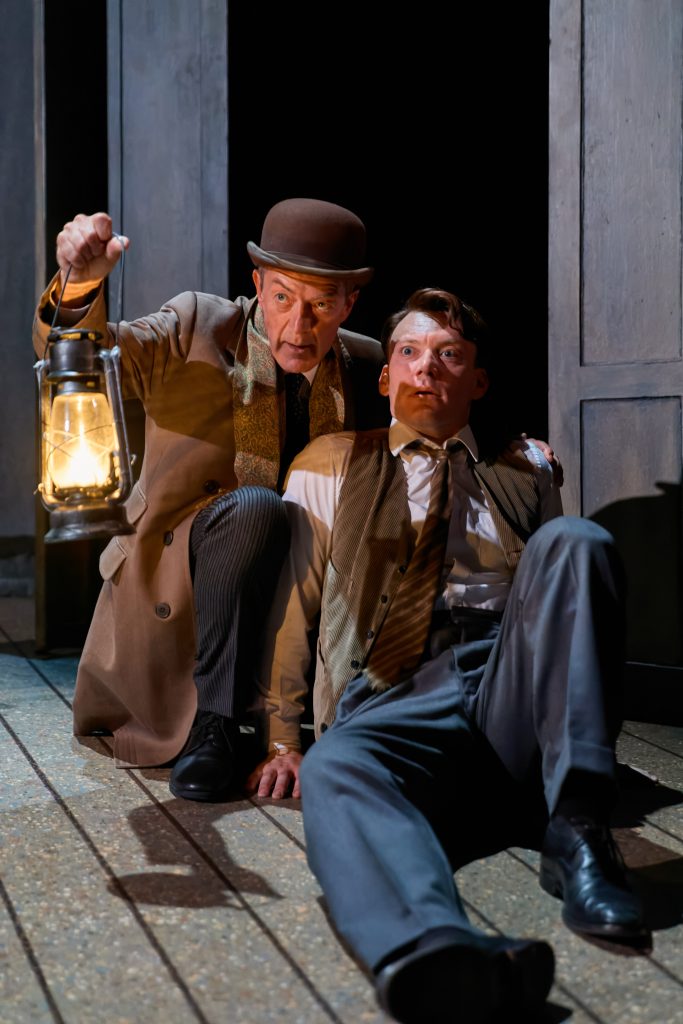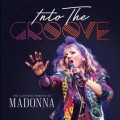
The Woman in Black: A Nightmare Before Christmas
‘It was 9:30 on Christmas eve’ speaks an old man on a sparse stage, suddenly he is interrupted by another actor emerging from the audience seats. This is how the play starts and it is in this dichotomy between darkness and light, fictional and real that ‘The Woman in Black’ thrives. It may seem odd to pair Christmas with ghosts, but this is a classic pairing that goes all the way back to Dickens. Indeed, it is in the bleak midwinter where the sun abandons us to our frosty fate, where reflections upon the past and our own mortality are commonplace. While the world is in hibernation we are left to the mercy of our imagination. Stephen Mallatratt’s adaptation of Susan Hill’s book works as the play utilises our imagination perfectly. Directed by Robin Hereford the immersive nature of theatre itself means the audience is kept in a constant state of flight. At once we are scanning the corners of the stage for a sign of the spectre, while also not daring to stare too deeply into the blackness. Mallatratt’s meta modern adaptation allows for an awareness of the process of turning a written story into a play, creating the opportunity for humours moments that serve to elevate the tension while grounding it in a layer of reality. This self-awareness allows for the audience themselves to enter a collective performance, one which during the production I saw was played perfectly with no disruption to the play. This creates an uneasy feeling as even when the play ends and you are traveling home the fear remains that you will see ‘The Woman’ again.
Dualism runs through the play like writing in a stick of rock and is reflected in the two-man cast. Arthur Kipps, played by Malcom James, and The Actor, played by Mark Hawkins, effortless convey the narrative switching between themselves and other characters seamlessly. This adds to a sense of loneliness and isolation creating further fear among the audience who forget they are in a room of hundreds of people. Malcom James particularly goes through a multitude of roles throughout starting as an old Arthur Kipps, a meek mouse of a man broken by the events he has endured, to broad and brash Yorkshire landowners and coachmen. Credit must be given so, the nuances used in these voices that are broad enough to be distinct from each other while still nuanced enough not to be cartoony. Mark Hawkins too does well to show echoes of the man Kipps will one day become and makes an excellent imaginary dog owner.
The sensation of being alone in an unfamiliar house at night is created not just through the actors but also using minimal set design (Michael Holt), thoughtful use of light and shadow (Kevin Sleep), and genius specific instances of sound (Sebastian Frost). I saw people literally jump out of their seats at the sound of a bloodcurdling scream or shrouded figure. This is not one for the very young unless you want them to not sleep until summer. The gauze used to partition the stage again reflects the dualism of the play, but also serves to obscure the back of the stage creating an unseen area that menaces the audience with the threat of the unknown. The gauze itself is reminiscent of the veil which ‘The Woman’ wears raising the fear that she is there behind it always watching. The play knows very well the power that the unknown and unseen has upon our imaginations and allows this to do the heavy lifting. ‘The Woman’ seldom appears in the play this is an excellent choice that building up the dread of her eventual reappearance. By the second act a great many of the audience were having to watch from between their fingers demonstrating why this has been one of the longest lasting and most successful ghost stories. If you want to get your blood pumping to fight off the winter chill then there is no better way than seeing this play, just make sure you have a night light for when you go to bed as you will definitely need to sleep with the light on after.
Review by Joe Harvey




Comments Closed